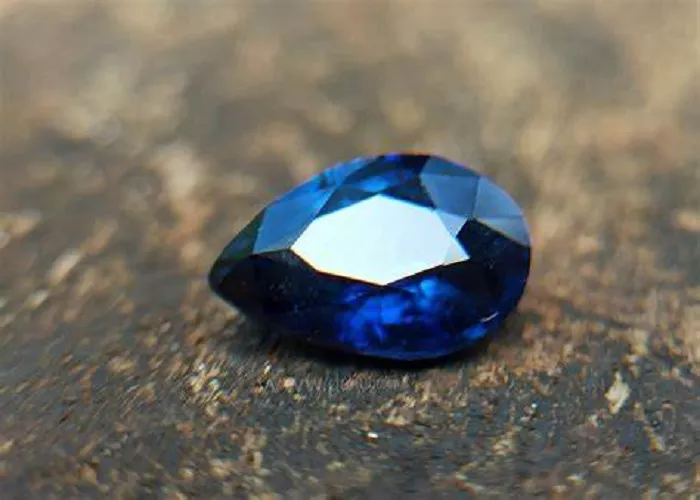Sapphires are among the most sought-after gemstones in the world. Among them, the vivid royal blue sapphire stands out as the most prestigious and desirable. Its deep, rich color symbolizes luxury, power, and elegance.
This guide will cover everything you need to know about royal blue sapphires, including what makes them special, how they are graded, where they come from, how to choose the best one, and how to care for them.
Whether you’re buying a sapphire for an engagement ring, a collector’s piece, or simply out of love for gemstones, this article will help you make an informed decision.
What Is a Vivid Royal Blue Sapphire?
A royal blue sapphire is a variety of the mineral corundum (aluminum oxide). While sapphires come in many colors—pink, yellow, green—the blue ones are the most famous.
The term “royal blue” refers to a specific shade: a deep, vivid blue with a slightly violetish undertone and high saturation. The finest royal blue sapphires have a velvety appearance, meaning they look smooth and luxurious under light.
How Is It Different from Other Blue Sapphires?
Not all blue sapphires are “royal blue.” Here’s how they compare:
- Royal Blue – Deep, vivid blue with slight violet undertones
- Cornflower Blue – Light to medium blue (like the Kashmir sapphire)
- Peacock Blue – Blue with a greenish tint
- Midnight Blue – Very dark, almost blackish blue
Royal blue is the most valuable shade because of its perfect balance of depth and brightness.
What Makes a Royal Blue Sapphire So Special?
Rarity
Natural royal blue sapphires are rare, especially in large sizes. Most high-quality stones come from a few select locations.
Symbolism & History
Sapphires have long been associated with royalty and power. Kings and queens wore them as symbols of wisdom and divine favor. They are also a popular choice for engagement rings, as seen with Princess Diana’s and Kate Middleton’s iconic rings. Some believe sapphires bring mental clarity and protection.
Durability
Sapphires are second only to diamonds in hardness, scoring 9 on the Mohs scale. This makes them perfect for everyday wear in rings and bracelets.
How Are Royal Blue Sapphires Graded?
Gemologists evaluate sapphires based on the Four Cs: color, clarity, cut, and carat weight.
Color
Color is the most important factor in determining a sapphire’s value. The ideal royal blue sapphire has a pure blue hue with slight violet undertones, strong saturation, and a medium to medium-dark tone. Top-grade stones have even color distribution with no visible zoning or unwanted tints.
Clarity
Sapphires often have natural inclusions. The best stones are eye-clean, meaning no flaws are visible to the naked eye. Some inclusions, like needle-like rutile, can create a desirable velvety effect, but too many can make the stone look hazy.
Cut
A well-cut sapphire maximizes brilliance. Common shapes include oval (most popular for rings), cushion (classic and vintage), round (great for sparkle), and emerald (shows clarity well). Poor cuts can make the color look uneven or dull.
Carat Weight
Small sapphires (1-2 carats) are more common, while large sapphires (5+ carats) are extremely rare and expensive. Prices rise exponentially with size.
Where Do the Best Royal Blue Sapphires Come From?
Kashmir
Kashmir sapphires are the most prized, known for their velvety blue color due to fine silk inclusions. The mines are now exhausted, making stones from the 1880s the most valuable. Auction records for Kashmir sapphires exceed $200,000 per carat.
Burma (Myanmar)
Burmese sapphires have a rich, intense blue, similar to Kashmir but slightly darker. High-quality stones are rare due to mining restrictions.
Ceylon (Sri Lanka)
Ceylon sapphires are bright and lively, often lighter than Kashmir or Burmese stones. They are more affordable but still beautiful.
Madagascar & Australia
These regions produce good commercial-quality stones, some of which can rival Ceylon sapphires. Many are heat-treated to improve color.
Lab-Created vs. Natural
Lab-created sapphires have the same chemical composition as natural ones but cost much less. However, natural sapphires hold their value better over time.
How to Choose the Best Royal Blue Sapphire
Prioritize Color
Look for a vivid, saturated blue without greenish or grayish tints. The color should be consistent under different lighting conditions.
Check for Treatments
Heat treatment is common and acceptable, as it enhances color. Avoid diffusion-treated or dyed stones, as they are lower quality.
Examine Under Different Lighting
View the sapphire in natural daylight and indoor light to see its true color.
Buy from Reputable Sellers
Always ask for gem certification from trusted labs like GIA, AGL, or SSEF. Avoid deals that seem too good to be true.
How to Care for Your Royal Blue Sapphire
Clean your sapphire with warm soapy water and avoid harsh chemicals. Store it separately to prevent scratches, and check prongs regularly if set in a ring.
Conclusion
A vivid royal blue sapphire is one of the most magnificent gemstones in the world. Its deep color, rarity, and royal history make it a favorite among collectors and jewelry lovers.
When buying one, focus on color, clarity, and origin. A high-quality sapphire will last for generations, making it a worthy investment.
Whether you choose a Kashmir, Burmese, or Ceylon sapphire, this gem will always be a symbol of elegance and timeless beauty.
Would you like help finding the perfect royal blue sapphire? Contact a trusted jeweler or gemologist to ensure you get the best quality stone.
Related Topics:
- What Does a Pink Sapphire Look Like?
- How Much Does a Yellow Sapphire Cost? Insights on Pricing
- What Sapphire Represents: A Comprehensive Guide


